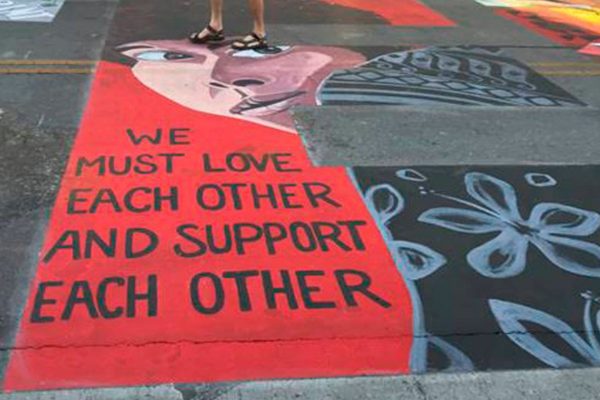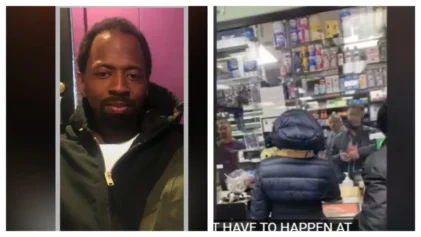Five police officers in Palo Alto, California, filed a lawsuit on July 8 against the Silicon Valley city over a Black Lives Matter mural containing an image of Assata Shakur that was displayed on the street near City Hall.
The officers claim the mural, 245-feet long and seventeen feet tall, first painted in June following the death of George Floyd and commissioned by the city, included anti-police images that constitute harassment and discrimination against law enforcement. The mural, located on Hamilton Avenue in downtown Palo Alto, in “front of Palo Alto City Hall and immediately adjacent to the Palo Alto police department,” spelled out the phrase “BLACK LIVES MATTER” and included imagery inside each letter. It vanished from the street by last November.

“Law enforcement officers, including Plaintiffs, were forced to physically pass and confront the Mural and its offensive, discriminatory, and harassing iconography every time they entered the Palo Alto Police Department,” said the lawsuit obtained by Atlanta Black Star.
The police department is located at 275 Forest Ave., on the opposite side of City Hall from the mural.
The suit was filed in Santa Clara County Superior Court by Palo Alto police officers Eric Figueroa, Michael Foley, Christopher Moore, Robert Parham and Julie Tannock.
According to the lawsuit, “Plaintiff’s careers have been materially and adversely affected and irreparably harmed and damaged by the conduct of the Defendants.” The suit continues, “Defendants, and each of them, created and allowed to exist a harassing, discriminatory, and retaliatory work environment and failed to eliminate the illegal conduct complained of by Plaintiffs.” The retaliation outlined in the lawsuit includes “refusing to eliminate the harassing and discriminatory conduct, and failing or refusing to investigate Plaintiffs’ complaints.”
Officers complained to officials that the “discriminatory” mural violated the Fair Employment and Housing Act, but the city “ratified the conduct and insisted that it remain and persist,” according to the lawsuit.
Along with an image of Assata Shakur, the mural also included the logo for the New Black Panthers.
In July 2020, The National Police Association petitioned for the mural’s removal.
“If it is not possible to imagine putting a 17′ tall mural of nurse killer Richard Speck in front of a hospital or putting a 17′ tall mural of Dan White, who assassinated San Francisco Mayor George Moscone and Supervisor Harvey Milk, in front of a mayor’s house, the atrocity of the celebration of a fugitive convicted cop killer in front of Palo Alto’s City Hall is equally reprehensible,” the petition read.
The letter “E” in the mural features imagery of Shakur from her autobiography, and her quote “We must love each to support each other.”
Shakur, born JoAnne Deborah Chesimard, is a former member of the Black Liberation Army, She was convicted of fatally shooting a New Jersey state trooper after he stopped her and other BLA members on a New Jersey highway in 1973. In 1979 was broken out of a maximum security prison in New Jersey by BLA members and eventually fled to Cuba, where she was granted asylum in 1984. In 2013, the FBI placed Shakur on the Most Wanted Terrorists list, making her the first woman to be added to the list.
According to Shakur, who wrote from Cuba, she was forced to flee because of “government persecution.” The FBI had branded the Black Liberation Army an “anarchist group,” and Shakur’s family climbs she was targeted by the government.
The officers suing the city are seeking physical, mental and emotional damages, including health care services, economic damages, attorney fees and court costs yet to be determined but “in excess of $25,000.” According to the suit, the officers may be forced into early retirement due to the impact on their personal health and well-being.


